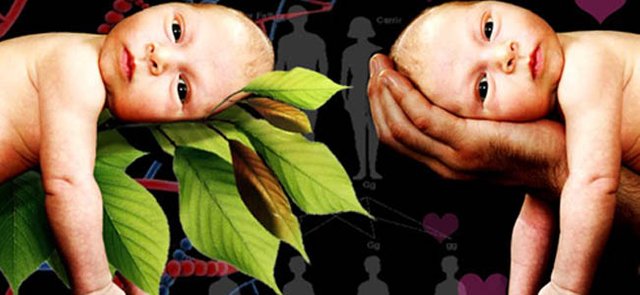Where does it come from? : Nonverbal Communication Edition
What is this thing known as Nonverbal Communication?

In a world that so easily forgets how to communicate, we, as humans, often disregard one of the most prominent ways our species exchanges messages: nonverbally.
Not only does nonverbal communication make up 65% of our ratio in communicating within situations (versus 35% verbally), but it is made up precisely of non-linguistic, multi-channel, ambiguous, and continuous aspects. Now before I go on, let me explain what I mean; By non-linguistic, I mean that nonverbal communication does not belong to a language-- it is not done through verbal communication, nor does it take on one specific language (e.g., English, French, Chinese, etc..); it is UNIVERSALLY known! Secondly, it is multi-channel, which means it can be communicated in a number of ways through many different channels (e.g., through environmental characteristics, physical characteristics (clothing, smells, etc), vocalics, body position/movement, touch, etc..). Next, nonverbal communication is not explicit, but rather ambiguous-- this simply means that there is no dictionary definition for nonverbal communication or how it is processed; it is open to having several meanings or interpretations based off of an individual themselves. And lastly, it is continuous.... nonverbal cues NEVER stop!
Seriously, what is it?

When it comes down to it, truly, what is nonverbal communication? To make it easy and for the time being, let's link a definition to it: Nonverbal communication is communication without words.
Essentially, nonverbal behavior can do a multitude of things; it can substitute for verbal messages, it can repeat a message you are already conveying verbally, it can contradict your verbal message ("double-bind"), it can account or accent your verbal tone by making the message stronger and bigger or weaker, and lastly, it can regulate the conversation, as well as the flow of the conversation: it has the tendency to engage people more in conversation/situations (e.g., through eye contact), or disengage them. All of these facets listed above differ depending on the individual, the comfortability of the individual's in the situation, and the relationship between the two people interacting.
So the bigger question I'm trying to get at here is......
Where does it come from?

Our nonverbal behaviors, our actions and reactions, as well as the way our cues differ from the person standing next to us all has to stem from somewhere, right? But the bigger question is, where? One, or many, could argue that the environment around us plays a pivotal role in the way we communicate nonverbally. We begin to pick up or mimic facial expressions, body movements, pitch, tone of voice, eye contact, and spatial regions based off of the people we surround ourselves with...... BUT, that doesn't explain why or how we come out of the womb expressing nonverbal cues. For example, when babies are born, all, if not most, are crying (expression of pain, confusion, etc..) once the leave the mother's stomach, correct? Once the baby reaches a certain age or is in this world long enough to see their mother and other human beings, they begin to participate in motor mimicry- they mimic the faces of others; however, what we fail to realize is that when these babies are born, and even after they start mimicking others, the babies are not/do not associate the meaning of pain or other emotions behind the expressions they are portraying... they merely JUST DO IT. Although one could say expressions of pain are the same for babies as they are for adults, children that are expressing emotions and acting/reacting to situations don't have a logical reason for doing so; hence the question of.. why are they doing it if they have not been taught to do so (nature vs. nurture)?

One could suggest that babies are hardwired with emotions,and are born with the ability to mimic or follow others, or even the suggestion that they are born learners. What do YOU think? How is this possible and is it a coincidence? Tell me your opinions! And thanks for reading! (:
P.S. If you want to check out an interesting study regarding this topic, look up the Farber (1981) study! -- I know, boring... but totally worth it!
Nature vs nurture goes to say that the environment vs the genome brings certain virtues into somebody's life. However, while you're in the womb, are you being affected that heavily by your mother's environment?
Mesa likey lady. Keep Steeming!
Fair statement. For all we know, we were actually able to see the environment around us while in the womb.